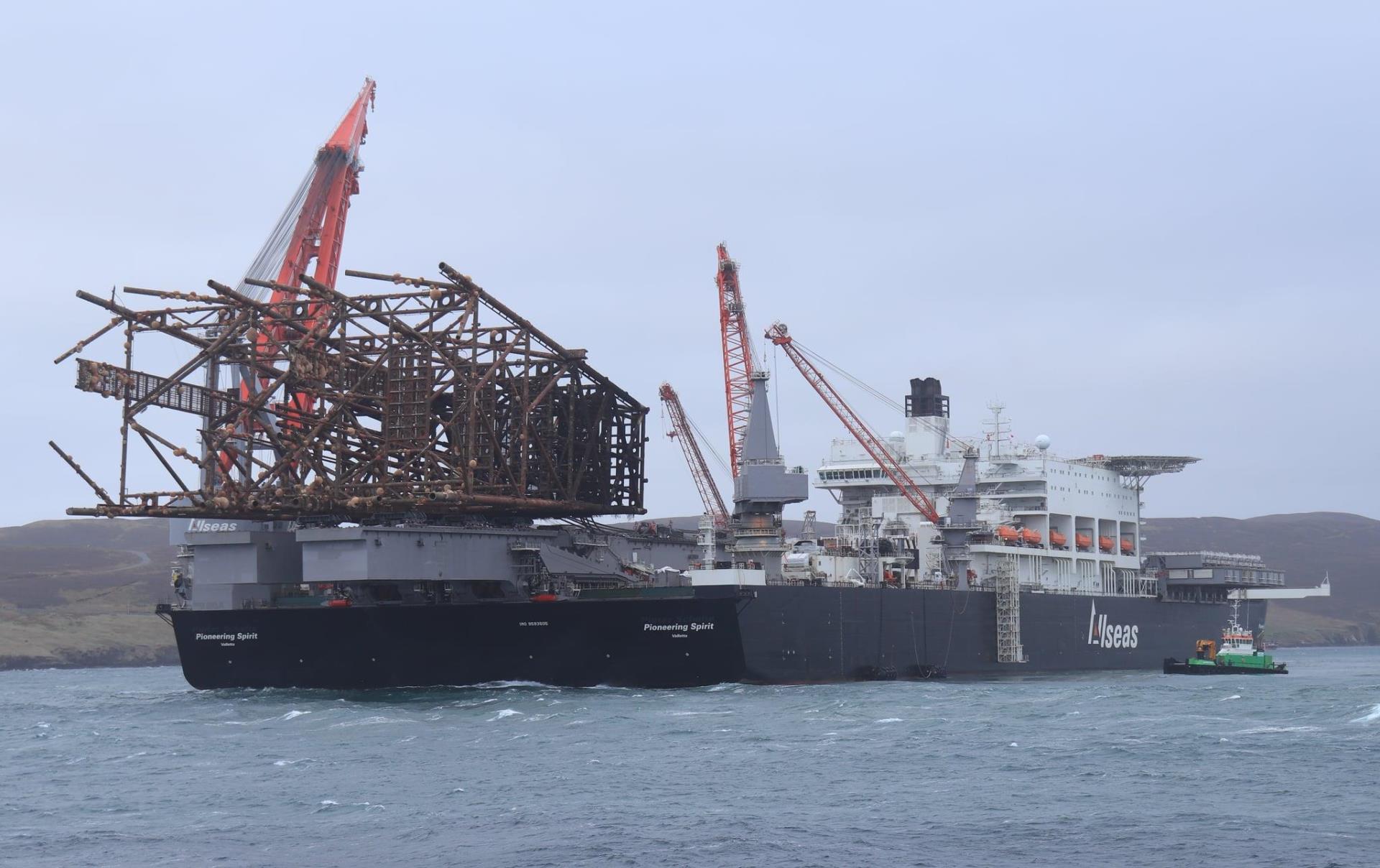
There is so much work to be done over the next 10 years in decommissioning that executing it could be a bigger concern than the supply chain having to chase it.
That’s the view of Offshore Energies UK’s (OEUK) new decommissioning manager Ricky Thomson, asked about the domestic supply chain’s ability to capture the value.
A voluntary target of 50% local content has been signed between industry and government for the sector by 2030 through the North Sea Transition Deal.
There’s plenty to tackle; the latest estimate from the North Sea Transition Authority (NSTA) regulator forecast UK spend over the next decade (2022–2031) to be £20bn, or up to an average of £2bn per year.
“Over the next 10 years there’s huge amounts of work and it needs to be done,” says Thomson.
“I foresee us having more of an issue actually doing it, because there’s so much work in that time, than the supply chain having to chase the work as much.
“I think that with the amount of work that’s coming up the UK supply chain has a unique opportunity, being to energise itself and be ready.”
CCUS and offshore wind for decom conference
In fact, “Energising Decommissioning” is the theme of this year’s OEUK conference on decom in St Andrews.
“It’s definitely an offshore energies decommissioning conference,” Thomson promises, “there’s a lot there and a lot of things that will provoke thought”.
Those attending last year might recall warnings from yard owners about the competition for value between using their services for decommissioning versus the more long-term and likely more lucrative contracts as the offshore wind sector picks up.
Delegates at this year’s conference, which kicks off on November 21, can expect discussion like that and more, as it takes a particular focus on areas like Carbon Capture Utilisation and Storage (CCUS).
To that end, the venue will be the place where OEUK launches its first set of well decommissioning for CO2 storage guidelines.
There’ll also be a focus on sharing lessons from oil and gas for areas like offshore wind, says Thomson, particularly on the importance of designing infrastructure with decom in mind.
“We want to try to bridge that engagement gap in terms of when you are designing as simple or as complicated as structure as you need to use the lessons of the industry, what the oil gas industry has done, to make sure that it’s going to be smooth because before you know it you’re going to be decommissioning these assets.”
Cost focus
Thomson is from a project execution background. Before joining OEUK in April, he worked in areas including the US Gulf, Qatar and South East Asia with firms like Oxy and Sapura.
All of that means he’s got an appreciation of the value of thinking ahead on the design side, and achievement when cost savings are made.
The conference comes while the UK decommissioning industry faces its own cost issues.
It has achieved a 25% cost saving since 2017, but well below the NSTA goal of 35% by the end of this year, which will all but certainly be missed.
Why does that matter? Oil firms can claim decommissioning rebates from the UK Government on their costs.
These are not payouts, as some have described, but rebates on taxes which were effectively overpaid during the production lifecycle of an oil and gas assets.
However, it is still money leaving the treasury, so savings will help mitigate those costs.
Thomson is keen not to overlook the success story so far.
“I’m from a project execution background so a 25% saving in anything is absolutely remarkable. With how technically difficult decommissioning is, how challenging it is being able to reduce costs in any part, is massive – it’s huge.
“The fact that 35% got put out in the first place – I don’t see how relevant that is. I see the relevance in the fact that we should be celebrating the achievement of a 25% saving.”
He’s also keen to point out that the journey is not over and the industry will continue to bring down those costs.
“That was a short term target, we’ve gotten so close to it. And over the next 10 years at least, when the industry is so active, I think we’re going to see a lot more savings and I think we’re going to get closer to those numbers if not surpassing them. I think that there’s so much opportunity to keep going.
“The 25% should be celebrated now, but we should definitely not get complacent or rest on our laurels. We should look to looking at further savings – and the industry is.
“You’ve got groups working in separate areas and coming together to try and realise these savings and it’s not the operator just squeezing the supply chain, it’s actual minds coming together to try and focus on realising these savings.”
Further savings and executing the work relies of course on having the skills and expertise ahead for what will be an industry of its own for another 40 years in its current guise, says Thomson.
OEUK: ‘Decommissioning is an entire industry on its own’
The St Andrews conference hopes to make some in-roads there with initiatives like a dedicated area for students.
“We’ve got a few new aspects, one of them being and basically touching on the fact that we want to get more people into industry, we want the younger generation to know what decommissioning is and to understand it, we’ve got a student room there.”
Thomson sees decommissioning as an opportunity for the younger generation to get a “whistle-stop tour” of the feats of ingenuity and engineering which have powered the North Sea industry over the last 50 years.
“So we want to scream from the rooftops: come and learn from what we’ve done in decommissioning and what we’re doing right now, you’ll learn so much rather than starting afresh and dismissing the past.
“Decommissioning is an entire industry on its own and it’s going to last 40 years and then it’s going to lead into other things.”
Recommended for you


 © Supplied by Paul Moar
© Supplied by Paul Moar